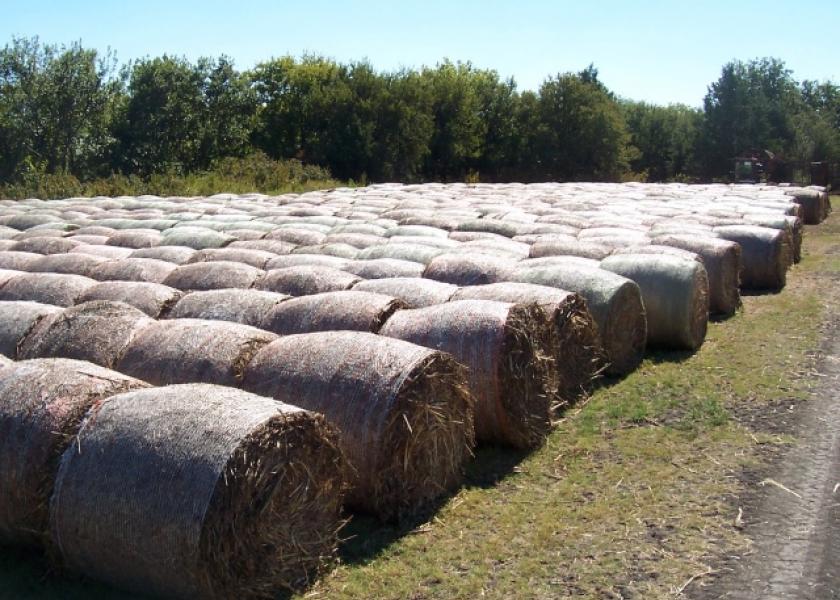Benefits of Proper Hay Storage Practices

Proper hay storage is always important. This year, with less inventory of harvested forage and high prices, it is worth discussing some simple storage practices that can lead to less spoilage. First, one of the few upsides of drought is that very little precipitation falls on hay stored outside. Precipitation, air temperature and humidity all lead to more spoilage in big bales. Twine wrapped bales are more subject to spoilage than net wrapped. Greater bale density leads to less spoilage. That being said, keep the following in mind when considering how your hay is stored.
Storage Site and Elevated Storage
Select a site on higher ground that is not shaded and is open to air flow to enhance drying conditions. The site should be well drained to minimize moisture absorption into the bottom of bales. Ground contact leads to more bale spoilage. When practical keep bales off the ground using low cost surplus materials like old pallets, fence posts, railroad ties and tires. Another option is a six inch layer of coarse ground rock. Anything that can be done to maximize drainage and minimize moisture within and around the storage site will be beneficial.
Orientation
Bails should be stored in rows, butted end-to-end, and oriented in a north/south direction. Avoid stacking three rows of hay in a triangle shape. This formation leads to more spoilage, particularly in the two bottom rows. North/south orientation combined with at least three feet between the rows permits good sunlight penetration and airflow, allowing for faster drying. Vegetation between the rows should be mowed.
Covers and Barns
Large round bales stored outside with plastic or canvas usually sustain much less spoilage compared to unprotected bales. If barn storage is an option, this is the best method. Dry matter losses in round bales stored for up to nine months in an enclosed barn should be less than two percent.
Summary
All forages packaged in large round bales benefit from protection and proper storage practices. Producers are encouraged to consider the cost to benefit ratio of providing this protection. Factors to consider include the value of hay, projected in-storage losses, local environmental conditions, the cost of providing protection and how long the hay will be in storage before it is fed. At the very least it may be worthwhile to restack or re-orient your hay supply according to the best practices described. Further details for estimating storage losses can be found in the fact sheet referenced below.
Reference: Oklahoma State University Extension Fact Sheet: BAE-1716







